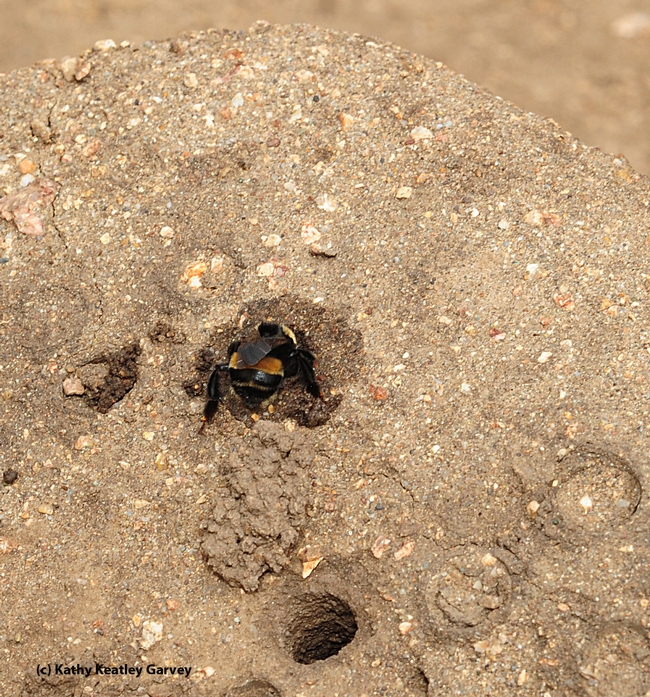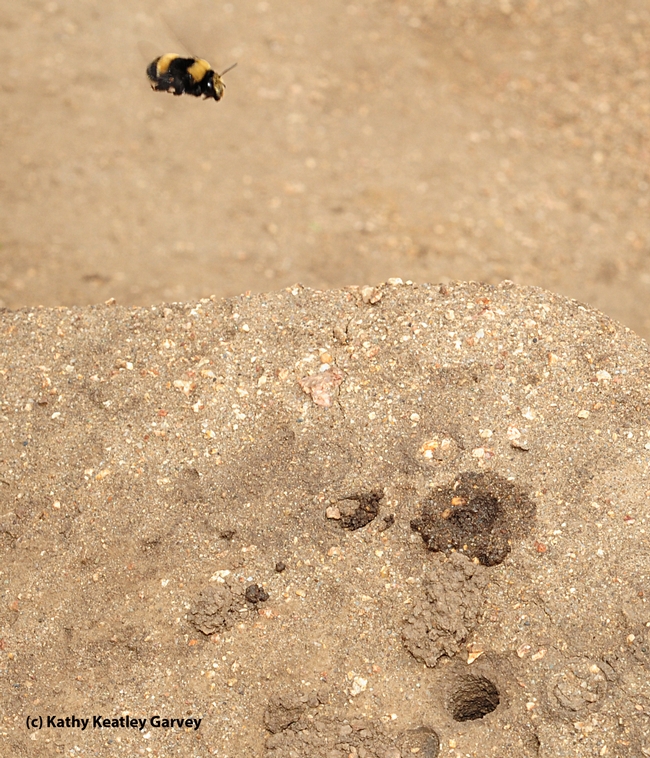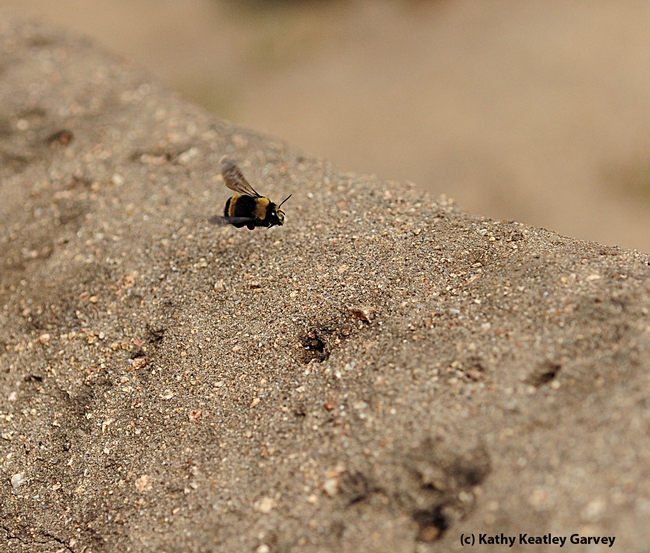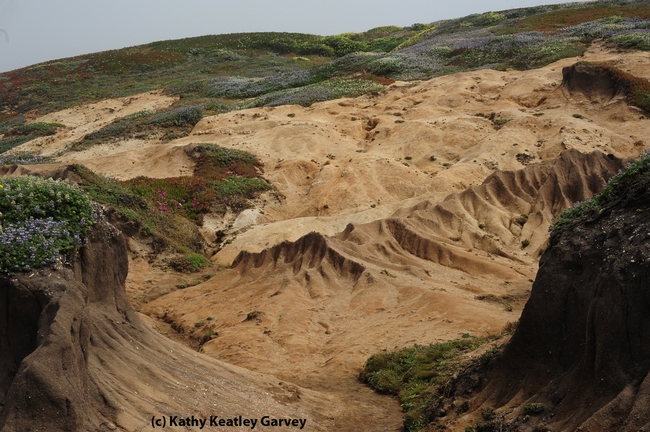- Author: Kathy Keatley Garvey
If you've ever been to Bodega Head in Sonoma County, you may have marveled at the waves crashing and the whales surfacing.
But have you ever seen the digger bees, Anthophora bomboides stanfordiana, aka bumble bee mimics, that nest in the sandstone cliffs?
They're there. They're foraging on flowers, excavating their nests, and rearing young.
These digger bees are not easy to photograph. On our May 9th trip, we got lucky: our 200mm macro lens picked up a digger bee warming its flight muscles.
"The species name indicates that it is a bumble bee mimic," the late Robbin Thorp (1933-2019), a global authority on bumble bees and a UC Davis distinguished emeritus professor of entomology. "These bees need a source of fresh water nearby. Females suck up water, regurgitate it on the sandstone bank surface, then dig away at the soft mud. They use some of the mud to build entrance turrets, presumably to help them locate their nests within the aggregation of nests."
"The female," Thorp said, "sucks up fresh water from nearby, stores it in her crop (like honey bees store nectar) for transport to the nest. She regurgitates it on the sandstone, and excavates the moistened soil. She carries out the mud and makes the entrance turret with it."
Thorp, a 30-year member of the Department of Entomology and Nematology, studied these bees. (See his presentation at the Proceedings of the Symposium on Biodiversity of Northwestern California, Santa Rosa, delivered in October 1991.)
Today, community ecologist and associate professor Rachel Vannette from the same department, is among scientists engaged in the research of these fascinating bees.
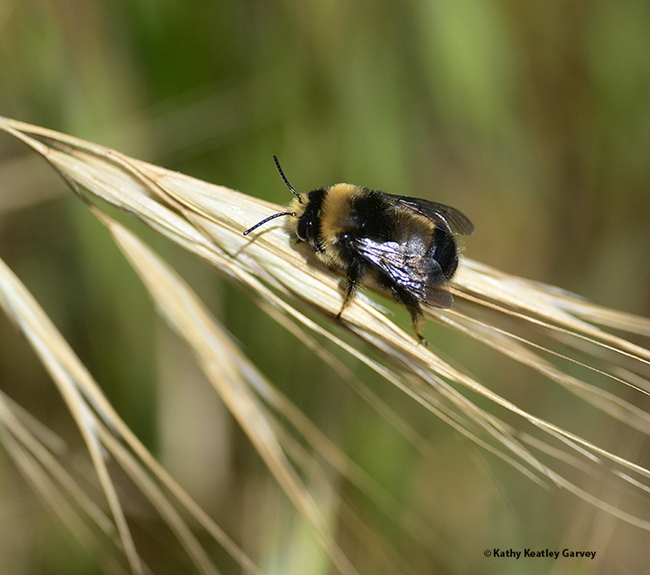
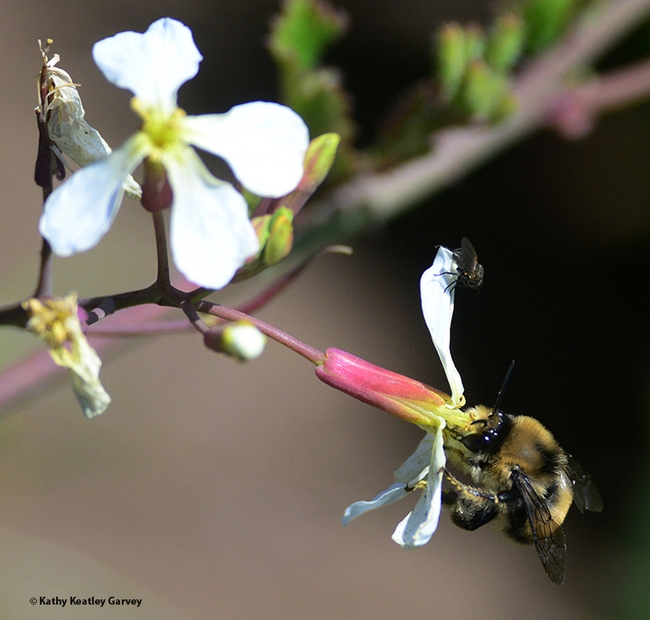
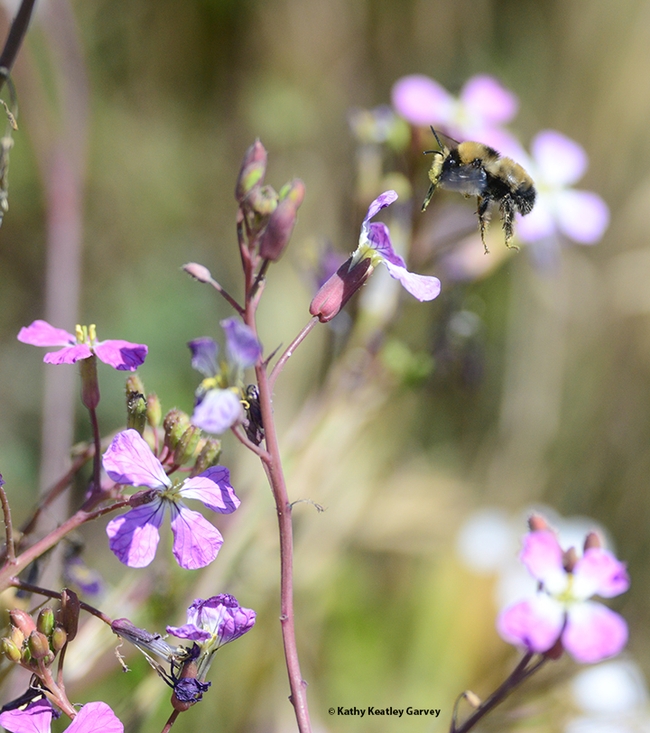
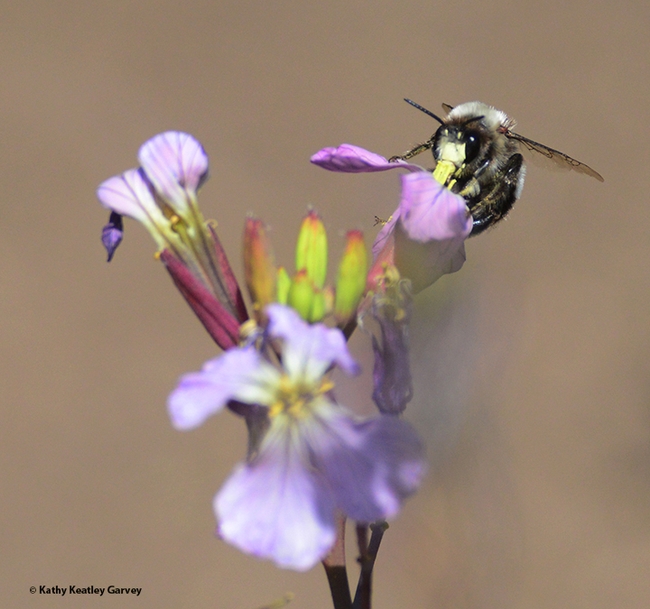
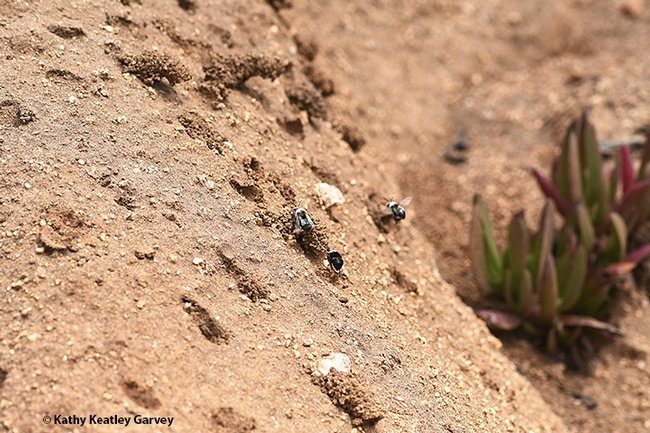
- Author: Kathy Keatley Garvey
Head to the Bodega Bay in Sonoma County and you'll see little kids building sandcastles on the beaches.
But head to Bodega Head in the spring and summer, and if you're lucky, you'll see female digger bees—bumble bee mimics—creating their own versions of sandcastles. These bees, Anthophora bomboides stanfordiana, build their nests in the sandy cliffs.
Look for the evidence: nest holes and tiny turrets.
If you missed it, be sure to access KQED's Deep Look video on “This Bee Builds Sandcastles at the Beach” by Gabriela Quirós and crew. It's educational, informative and entertaining. The photography is superb.
An excerpt from the Deep Look video: “It might seem peculiar to see bees at the beach. But the bumblebee-mimic digger bee (Anthophora bomboides stanfordiana) makes its home at beaches in Northern California and Oregon. Once they've mated, the females spend the spring digging their nests into sandy cliffs overlooking the Pacific Ocean.”
“They find a nearby source of water like a stream and slurp water into a pouch in their abdomen called a crop. They can make 80 daily trips back and forth from the stream to a cliff onto which they spray the water to soften it up. This allows them to dig a series of holes into which they lay their eggs.”
This digger bee is sometimes called the “Stanford bumble bee digger,” because the subspecies name, “stanfordiana,” refers to the Stanford University collection from 1904.
What do they mimic? The yellow-faced bumble bee, Bombus vosnesenskii, native to the West Coast of North America. But unlike the female bumble bees, female digger bees rarely sting and are not defensive.
The late Robbin Thorp (1933-2019), distinguished emeritus professor of entomology at UC Davis studied these bees. Current researchers include community ecologist Rachel Vannette, associate professor, UC Davis Department of Entomology and Nematology.
Thorp frequently pointed out that when most people think of bees, they think of honey bees. But there's a great diversity in bees, as he wrote in a paper, “Biodiversity and Pollination Biology of Bees in Coastal Nature Preserves,” that he and colleague Thomas Gordon presented at the Proceedings of the Symposium on Biodiversity of Northwestern California, held Oct. 28-30, 1991 in Santa Rosa. “The world bee fauna of bees (superfamily Apoidea) is estimated at 20,000 species,” they wrote. “Of these, about 10% are social, 75% are solitary, and 15 % are cuckoo parasites of other bees (Bohart, 1970).
“Bees are most diverse and abundant in arid warm temperate areas of the world, especially in the Mediterranean, California, and adjacent desert areas (Michener 1979),” they wrote. “With rare exceptions, bees rely on nectar and pollen as food resources: nectar primarily as energy for flight and other activities, pollen as nutrients for reproduction (ovarian and brood development). Most bees are generalists when foraging for nectar, restricted primarily by body or tongue size. Many bee species, however, exhibit host-specificity (oligolecty) in relation to pollen resources (Robertson, 1925; Linsley, 1958). Linsley and MacSwain (1958) define oligolecty as the collection of pollen from one or a few closely related plant species by all members of a bee species with use of alternative sources occurring only during stress periods when such pollen sources are locally (or temporarily) absent.”
“Bees are ‘keystone' species in most plant communities because of their importance as pollinators for the reproductive continuity of many flowering plants including rare and endangered species,” they related.
We've seen the digger bees at Bodega Bay foraging on wild radish and lupine in the spring and summer. And building sandcastles the ocean waves can't reach and people generally ignore.
Last week we saw a family checking out the holes in the sandy cliffs. “What are these?” they inquired.
“Digger bees, bumble-bee mimics,” I responded, mentioning the KQED “Deep Look” video.
They said they'd watch it.
We have a feeling they'll be back next year to watch the bees build their sandcastles.
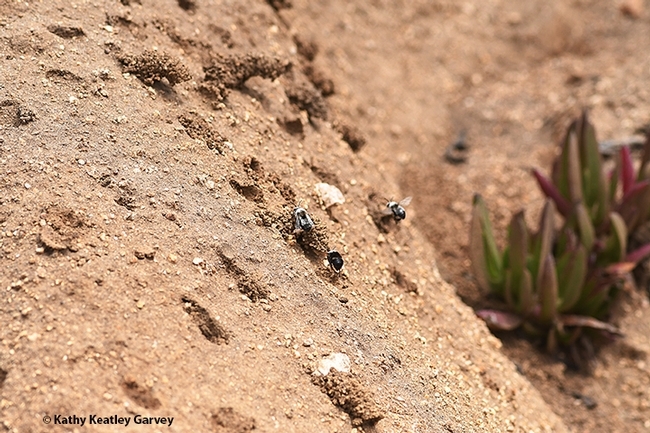
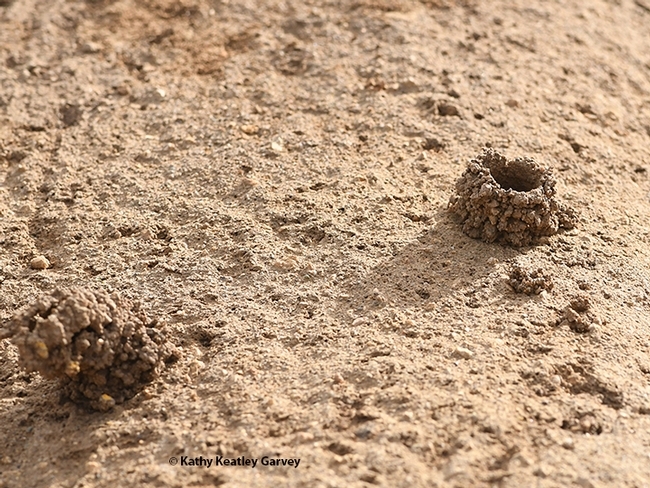
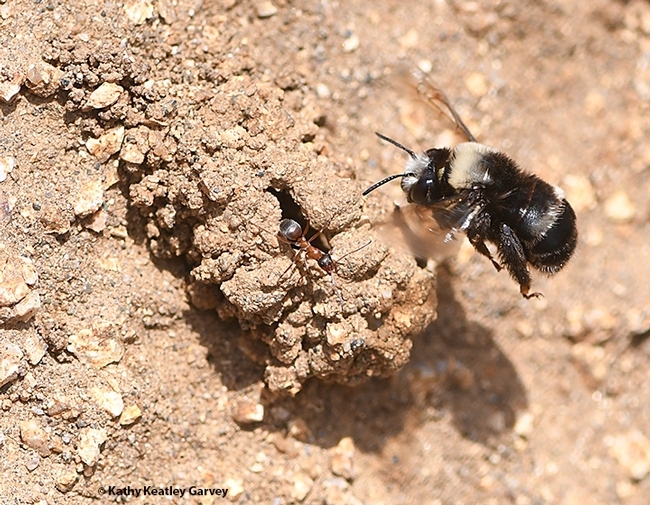
- Author: Kathy Keatley Garvey
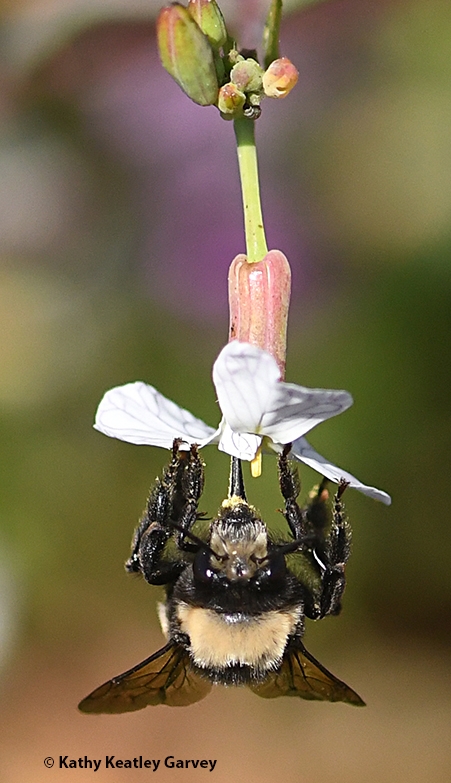
But have you ever seen the digger bees?
They're out there.
The sand cliffs are the home of the digger bee, a bumble bee mimic known as Anthophora bomboides stanfordiana. This bee builds turrets in the sand cliffs.
Last Thursday we watched several digger bees warm their flight muscles, take flight, and forage on the lupine, wild radish, and seaside daisy. Then we saw the females zipping in and out of their turrets: their cozy castles in the sand.
As the late Robbin Thorp, a global authority on bumble bees and a UC Davis distinguished emeritus professor of entomology, told us several years ago: "The species name indicates that it is a bumble bee mimic. These bees need a source of fresh water nearby. Females suck up water, regurgitate it on the sandstone bank surface, then dig away at the soft mud. They use some of the mud to build entrance turrets, presumably to help them locate their nests within the aggregation of nests."
"The female," Thorp said, "sucks up fresh water from nearby, stores it in her crop (like honey bees store nectar) for transport to the nest. She regurgitates it on the sandstone, and excavates the moistened soil. She carries out the mud and makes the entrance turret with it."
As part of a National Science Foundation grant, community ecologist Rachel Vannette, assistant professor, UC Davis Department of Entomology and Nematology, is teaming with other colleagues, including pollination ecologist Stephen Buchmann, to research these digger bees and their nests.
It's a big beautiful bee world out there.
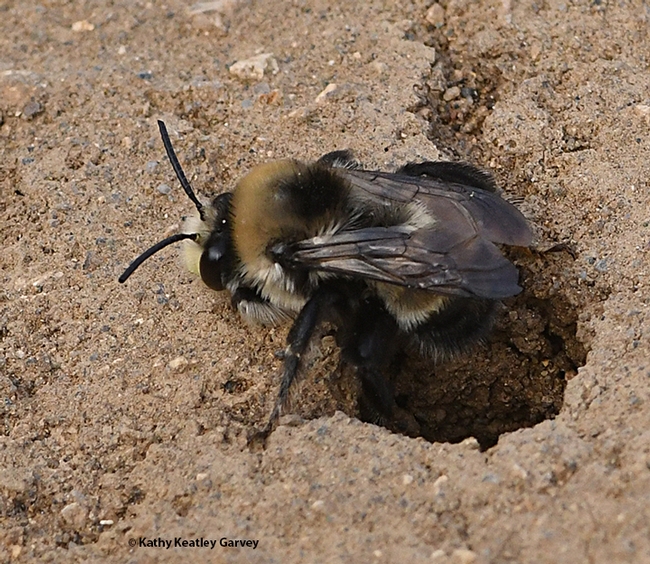
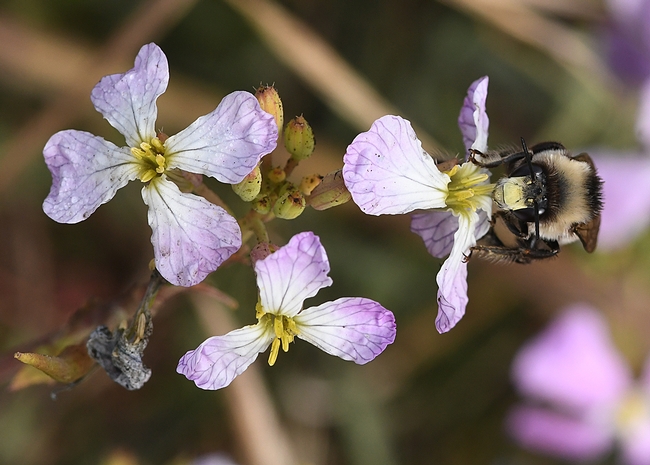
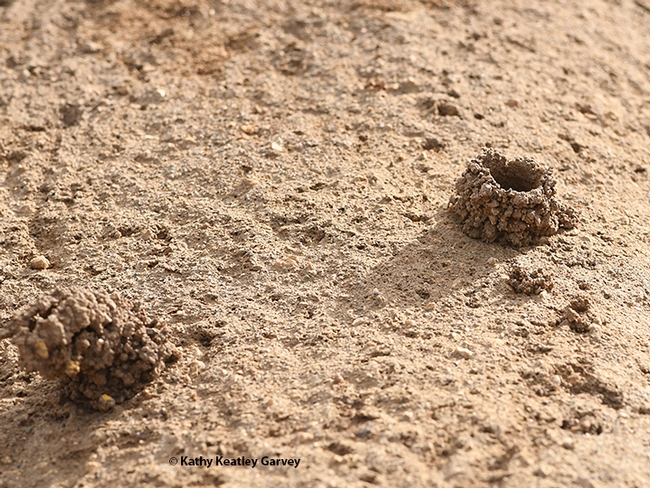
- Author: Kathy Keatley Garvey
There's more to Sonoma County's Bodega Head than the stunning views, crashing waves, nesting seabirds, and bursts of flora and fauna.
The sand cliffs are also the home of a digger bee, a bumble bee mimic known as Anthophora bomboides stanfordiana.
"The species name indicates that it is a bumble bee mimic," the late Robbin Thorp, a global authority on bumble bees and a UC Davis distinguished emeritus professor of entomology, told us several years ago. "These bees need a source of fresh water nearby. Females suck up water, regurgitate it on the sandstone bank surface, then dig away at the soft mud. They use some of the mud to build entrance turrets, presumably to help them locate their nests within the aggregation of nests."
"The female," Thorp said, "sucks up fresh water from nearby, stores it in her crop (like honey bees store nectar) for transport to the nest. She regurgitates it on the sandstone, and excavates the moistened soil. She carries out the mud and makes the entrance turret with it."
On multiple trips to Bodega Bay over the years, we watch in fascination as the bees excavate their homes, zip in and out of their turrets, and nectar on nearby flowers.
This time (June 24) we photographed an ant and bee encounter on a turret. The ant? Formica transmontanis, according to ant specialists Phil Ward, professor of entomology at UC Davis, and UC Davis alumnus Brendon Boudinot, who recently received his doctorate from UC Davis, studying with Ward.
"The species nests on the bluffs," Ward told us.
And about that bee-ant encounter? Commented Boudinot: "I suspect the little lady was alarmed by the big bee. These ants and their relatives are rather passive scavengers except during the brooding season, when fresh meat is an order. Most entomeat for Formica tend to be free-walking insects than barricaded larvae, as probably for the bee. For these reasons I think that the encounter may be coincidental!"
Scores of UC Davis entomologists have engaged in research at Bodega Bay. Rachel Vannette, assistant professor, UC Davis Department of Entomology and Nematology, is currently researching Anthophora bomboides stanfordiana and its nests as part of a National Science Foundation grant. Her project on solitary bee provision microbiome includes investigating the diverse community of bacteria and fungi in the provisions and brood cells.
While COVID-19 mandates and precautions hamper her research team's efforts (she's done some preliminary sampling this year and the entire team is planning to do research next year), the digger bees of Bodega Head keep digging, crafting turrets, nectaring on the nearby flora--and encountering ants.
They're all in this together.
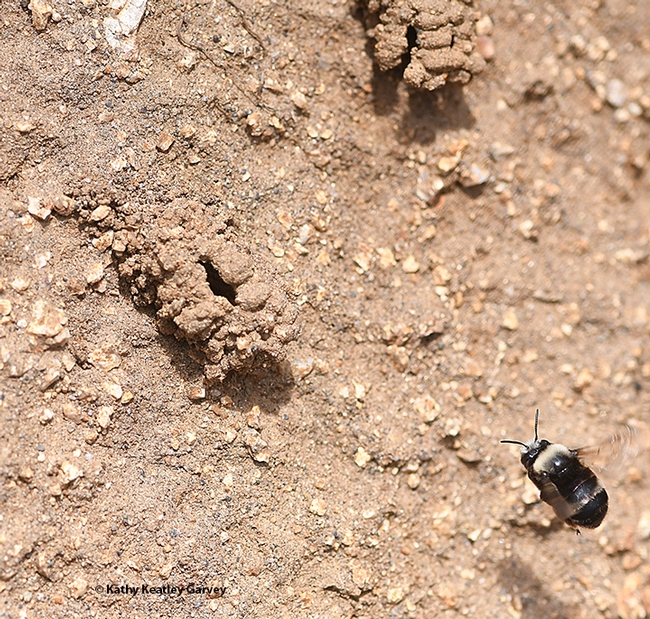
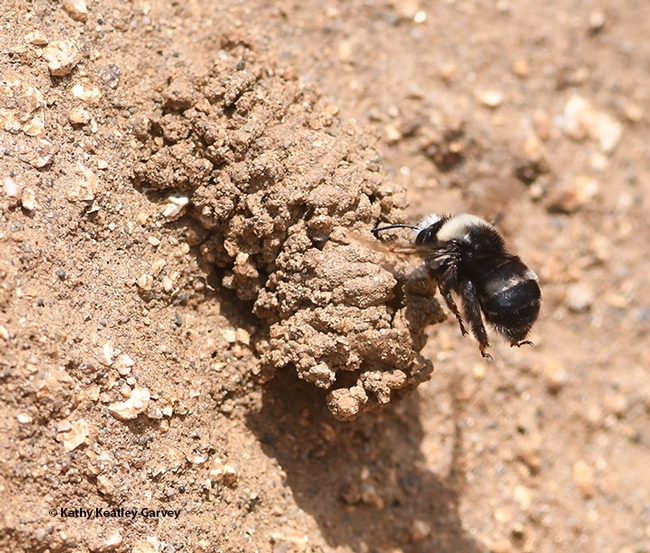
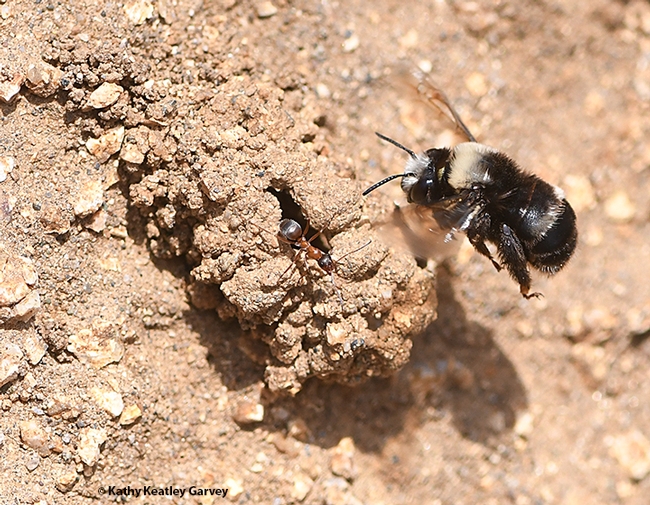
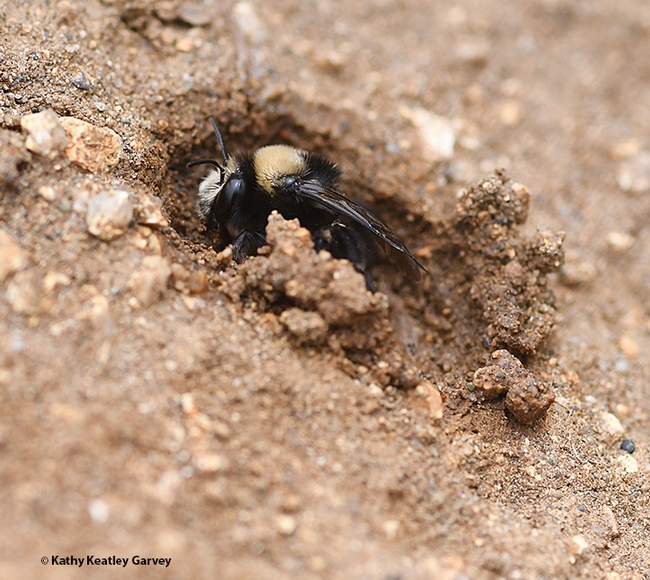
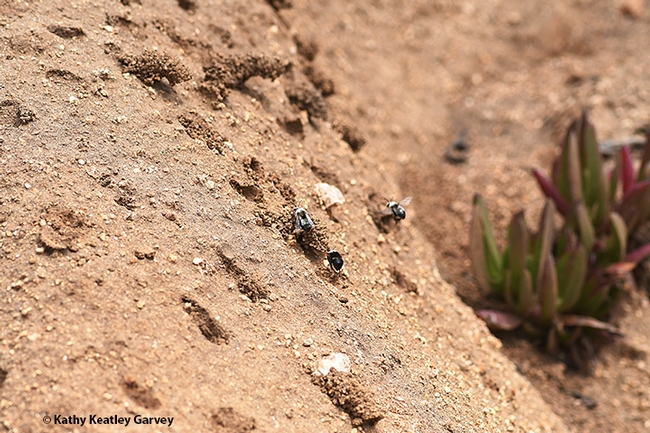
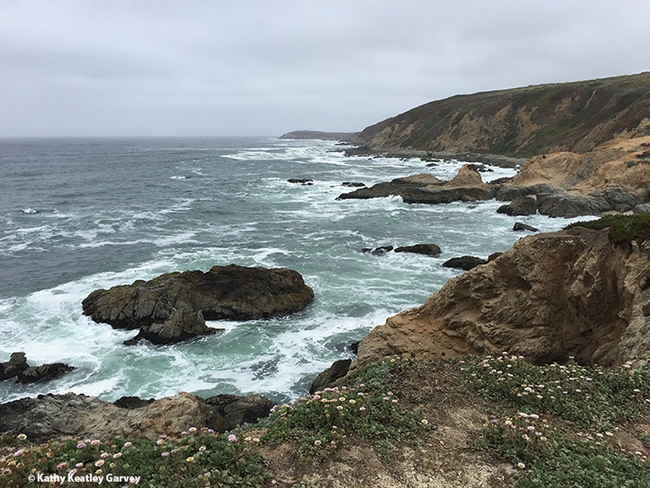
- Author: Kathy Keatley Garvey
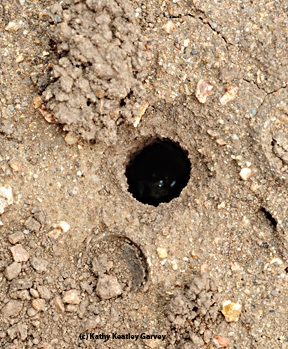
But there's one thing they don't do. They don't check out the sand dunes, home of the bee villages.
Tiny holes are everywhere, yet nobody seems to notice.
They're the work of digger bees, aka faux bumble bees. These are Anthophora bomboides stanfordiana, researched by native pollinator specialist Robbin Thorp, emeritus professor of entomology at UC Davis.
"The (female) bees suck up water nearby and then regurgitate on the (faces of the) sandstone cliffs to moisten and excavate soil for the tunnels, construct their turrets, and finally to seal the nest tunnel," Thorp says. The bees use some of the soil from the base of the turret to plug the entrance.
The bee turrets are somewhat like our gated communities! Keep out!
The digger bees have "grocery stores" all around them. You'll see the males and females foraging on the wildflowers, which include yellow and blue lupine, California golden poppies, wild radish, mustard, dandelions, and seaside daises.
If you crouch next to the bee villages, a nearby hiker is likely to ask "Lose something?"
No, we found something!
